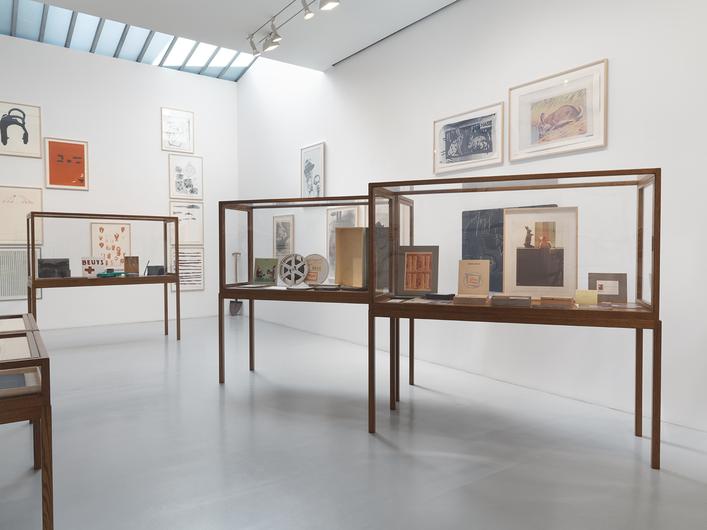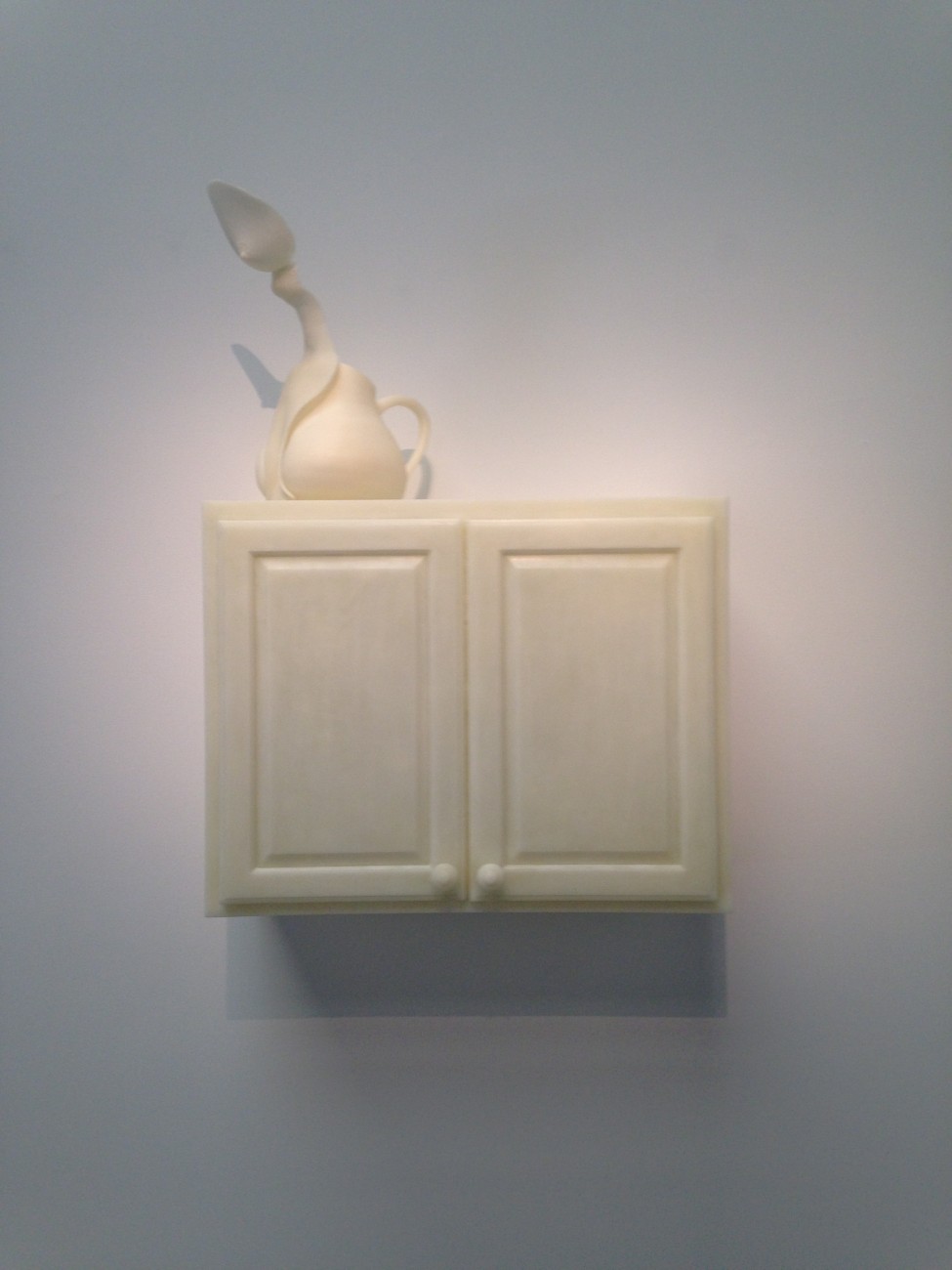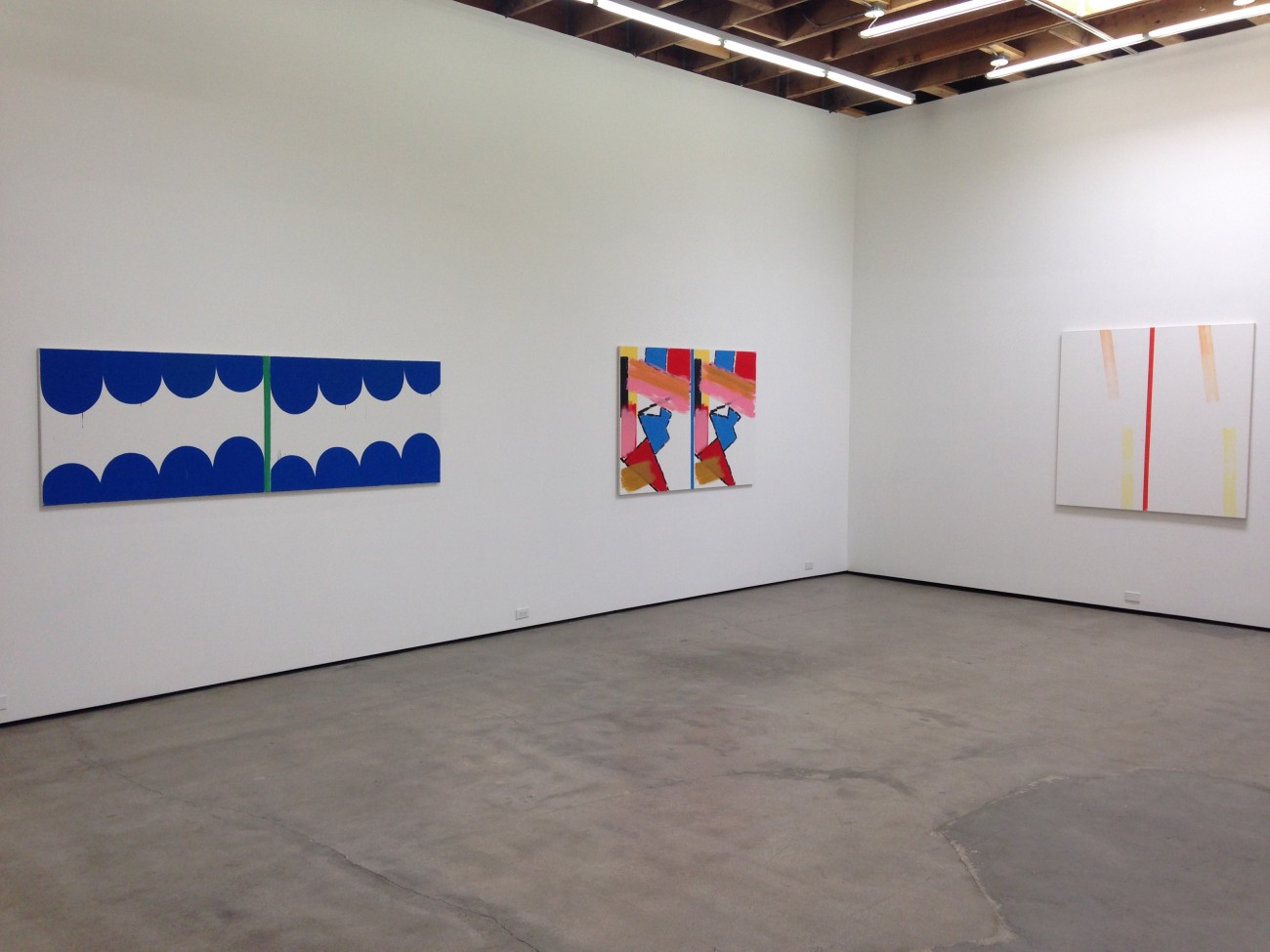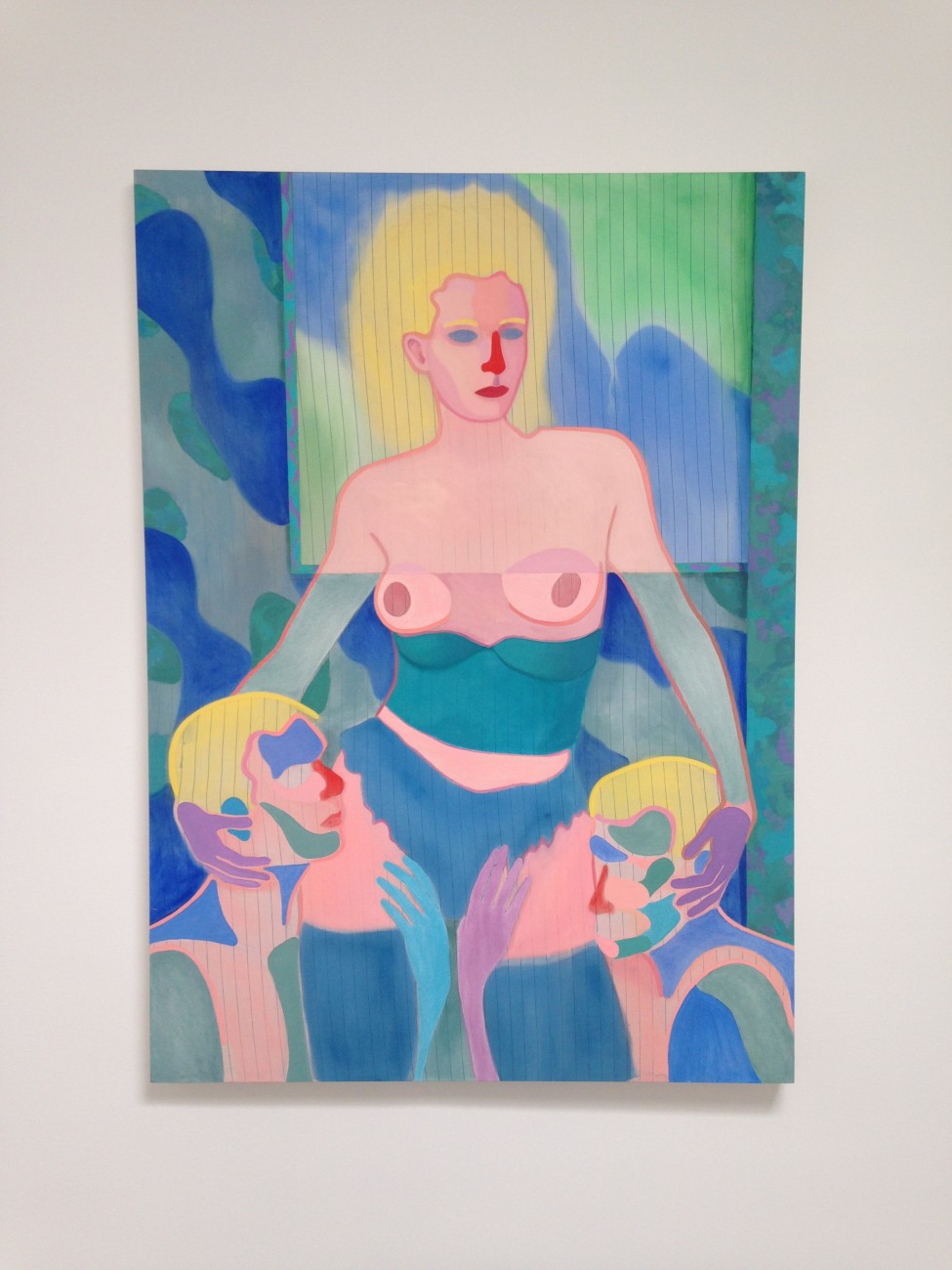Bernard Piffaretti’s show at Cherry & Martin features a number of works in a signature style that the artist has used since the 1980s. He begins by dividing the canvas with a line of color, and the painting that results looks like a diptych duplicate, two versions of the same image sharing a canvas with the originary line designating their “personal space”, giving the exuberantly colorful forms a little breathing room. But Piffaretti doesn’t think of his painting halves as duplicates. Rather, they are half-answers to a question, negations that return the viewer to the starting block.
The exhibition statement quotes Piffaretti:
“A copy is made in relation to a final state.” Duplication is a postponement – a break in the action that allows the viewer to see both sides of the canvas. An uncanny pattern emerges in Bernard Piffaretti’s paintings as Arielle Blair has written, “the eye wanders back and forth attempting to unlock the puzzle of the self-contained meme and decode the artist’s experiments in variation.” “The principle rule of dividing the canvas,” provides “a platform while functioning as an anchoring device of each painting.” “Piffaretti’s duplicated paintings are neither exact copies of one another, nor are they independent images.” They “make us do a double take, defying the stagnancy of certain abstract painting.”



































